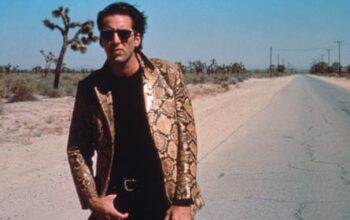In the opening moments of Zack Snyder’s Rebel Moon, a cute little computer-generated creature bearing a passing resemblance to Baby Yoda widens his cute little computer-generated eyes, steels his nerves, and uses his alien physiology to self-immolate, suicide-bombing his enemies into oblivion. Just 10 minutes or so into the movie, this is the point where any lingering questions about why Disney never took Snyder up on the Star Wars pitch that became Rebel Moon, are blown out of mind – a comparison perfectly drawn and discarded. It’s also a moment that didn’t make it into the first version of the movie.
That version came out last December, a relatively normal-sized 134 minutes of sci-fi action, followed by an even-shorter second film in April. The adorable suicide-bombing creature comes from Snyder’s new director’s cut, also in two parts, totaling a muscular, absurd 377 minutes. It’s about the length of the original Star Wars trilogy, and it’s now streaming on a Netflix near you.
With six-plus hours of material to work with, why didn’t Snyder simply reshape the material into a more manageable trilogy of two-hour movies with a clearer beginning-middle-end structure and release those from the jump? Ah, well, the trilogy-length version also includes a great deal of violence and a medium deal of sex that render it a hard R in the world of MPAA ratings. Supposedly Netflix wanted a more manageable PG-13 cut, but … why? The MPAA ratings really only affect theatrical admissions, and the first PG-13 Rebel Moon played in a handful of theaters for one week. (I know, because I paid to see it, on 70mm film for an all-digital production, no less.) The second one bypassed theaters entirely, save some press screenings. It seems more likely that Netflix, in their ongoing ravenousness, wanted their own Snyder Cut – a equivalent of the much-ballyhooed longer version of Justice League that Snyder’s most virulent fans somehow harangued into existence back in 2021. Whether or not the supersized Justice League qualified as a hit, few can say (though the few available metrics suggest it remained something of a cult item). But it was a buzzy topic of pop-culture conversation for at least a few weeks, so it makes sense that it would pique Netflix’s interest in reverse-engineering another one.
The difference, of course, is that Snyder wasn’t particularly capitulating to corporate interference when he made his PG-13 Rebel Moons. Technically, he was doing as Netflix asked, but the company never denied him the freedom to make his own R-rated movie alongside the compromise cut, which, lacking marquee characters like Batman and Superman, did not inspire nearly so much fanaticism. But here are the R-rated versions anyway, and like his four-hour cut of Justice League – something he didn’t truly intend to make until he realized he had the leeway to do it – Rebel Moon does not tell a vastly different story in its lengthened form. It simply tells it longer and more explicitly. The general tone – Dune meets a hyperactive video game – remains the same as well.
For many, this may sound like torture. Even to those who don’t flinch at the thought (or stare with confusion when confronted with the notion of “the director’s cut of Rebel Moon”, something normal people surely haven’t heard of), the longer cuts are a mixed bag. There are times when the possibly-apocryphal Rebel Moon fan may glory at the additional opportunities to sink into the perverse details of Snyder’s world, like the additional cutaways to Jimmy the Robot (voiced by Anthony Hopkins), an automaton who goes native and fights against his imperial bosses, having his little Terrence Malick moments of reverie. That’s not even the nuttiest automaton-related addition: the Kali, an inter-dimensional being who powers the bad guy’s ships, feeding on bone and occasionally weeping energy tears, has more screen time in the longer versions.
But alongside these rococo touches, there are many pre-existing scenes which Snyder has simply overextended past the point of all reason, virtual gallons of unconvincing digital gore, and a pair of matching sex scenes (one for each of the two movies!). All told, it’s a lot, and while the backstory of Kora (Sofia Boutella) and some of the other rebels is made clearer and more detailed, it doesn’t much affect the story’s emotional weight, or lack thereof. It’s still a lot of battle-wailing and stoic acceptance of honorable murdering, and for every kickass axe-swing or laser-blast, there are moments that step into numbing overkill. Everything that’s silly about the earlier versions, like a climactic battle that’s preceded by the extended slow-mo harvesting and piling of grain, only gets sillier at this length.

Yet a six-hour Rebel Moon also underlines what’s so endearing about Snyder’s opus, even or especially in its self-indulgent weaknesses. With the story trajectory so similar, all but the most dedicated fans may not immediately clock many of the director’s-cut differences that don’t include obvious signifiers like gore or nudity; instead, they’ll just find themselves watching a Rebel Moon that bends time into a different shape. The movies now feel even more like a strange dream state where many of the images are familiar, until they give way to variations or entirely new material. As additional weird world-building details emerge, others recede from memory, and, honestly, the 204 minutes of the new Chapter One: A Chalice of Blood, kind of fly by, despite far less streamlining. (Chapter Two, newly rechristened as Curse of Forgiveness, still suffers from the same problem as its shorter version: it’s a distended third act only.) It’s an event movie doing its damnedest to create an immersive fugue state that, if watched straight through and back to back, would take nearly a full business day to emerge from.
This is the kind of material that almost any sensible film-maker would have turned into a six-episode miniseries. But I think Snyder knew that cutting it up further would only make it easier to break its spell (and plenty of critics and fans already had an easy-enough time doing that). He couldn’t get his latest (and possibly greatest) into movie theaters; as far as the theatrical experience goes, Netflix are the Imperium officers, hoping to crush all resistance. But Snyder is one of the only streaming-pivot film-makers who feels like he’s mounting his own, digital-specific defenses against algorithmically processed content. Rebel Moon gestures toward the kind of content studios love – a steady stream of it, intended to become a multimedia franchise – while running absolutely amok for the fetishists, whether they’re really into world-building fantasy, skittering otherworldly creatures, blood and guts, Sofia Boutella, or grain-harvesting montages. The movie may lose the battle, but it’s sure piling up a whole lot of grain.
Source: theguardian.com


